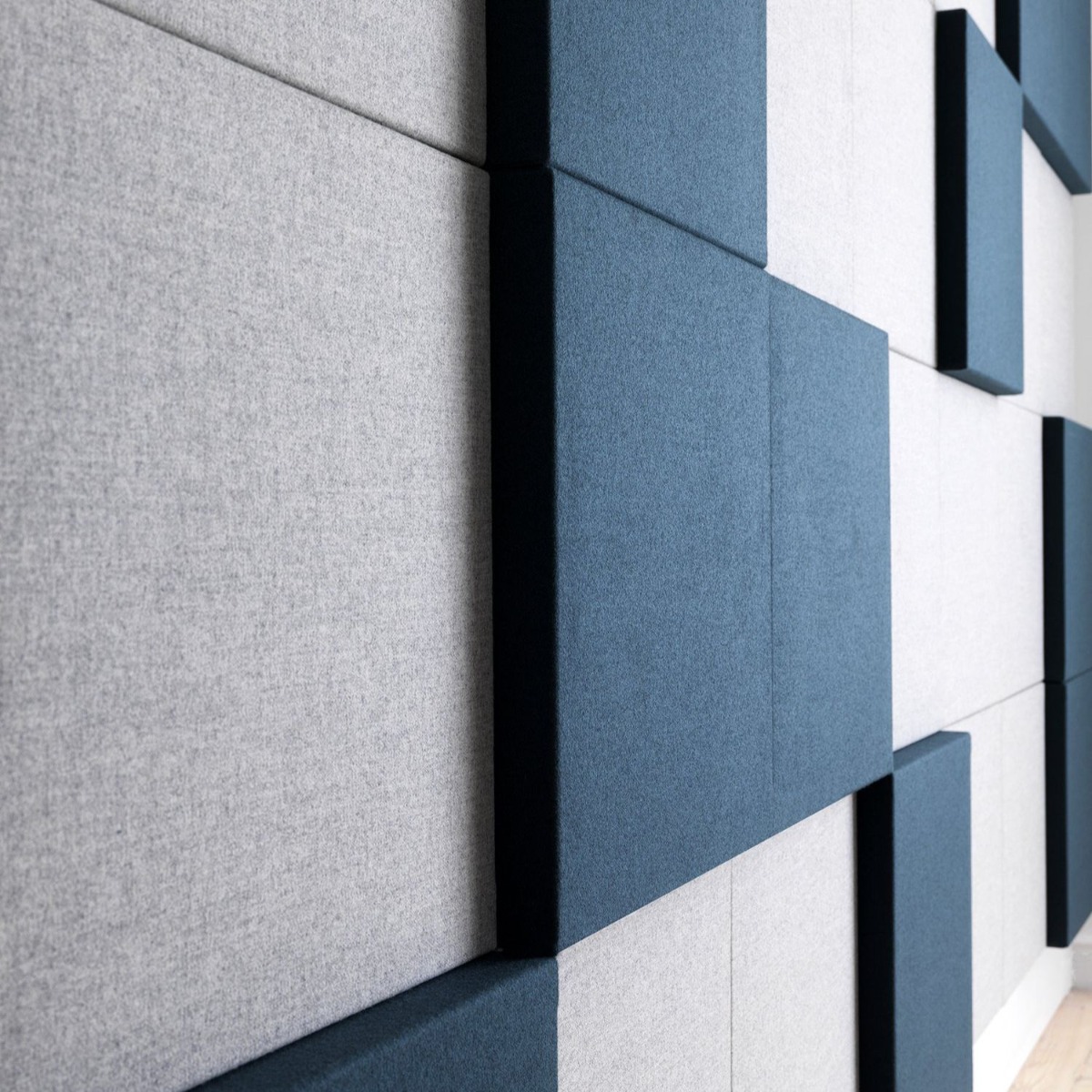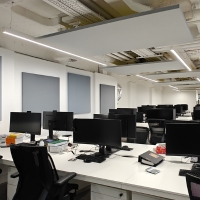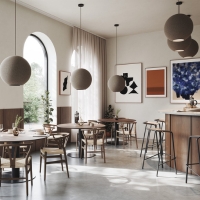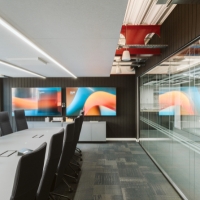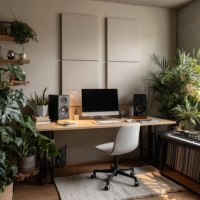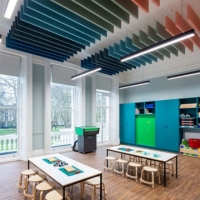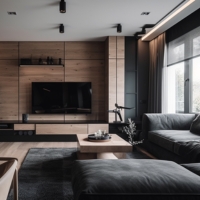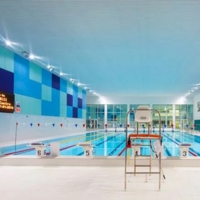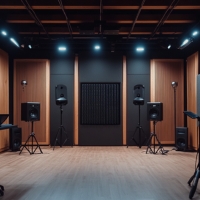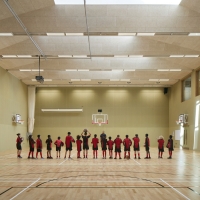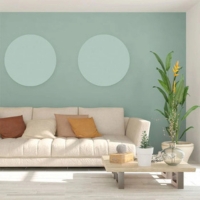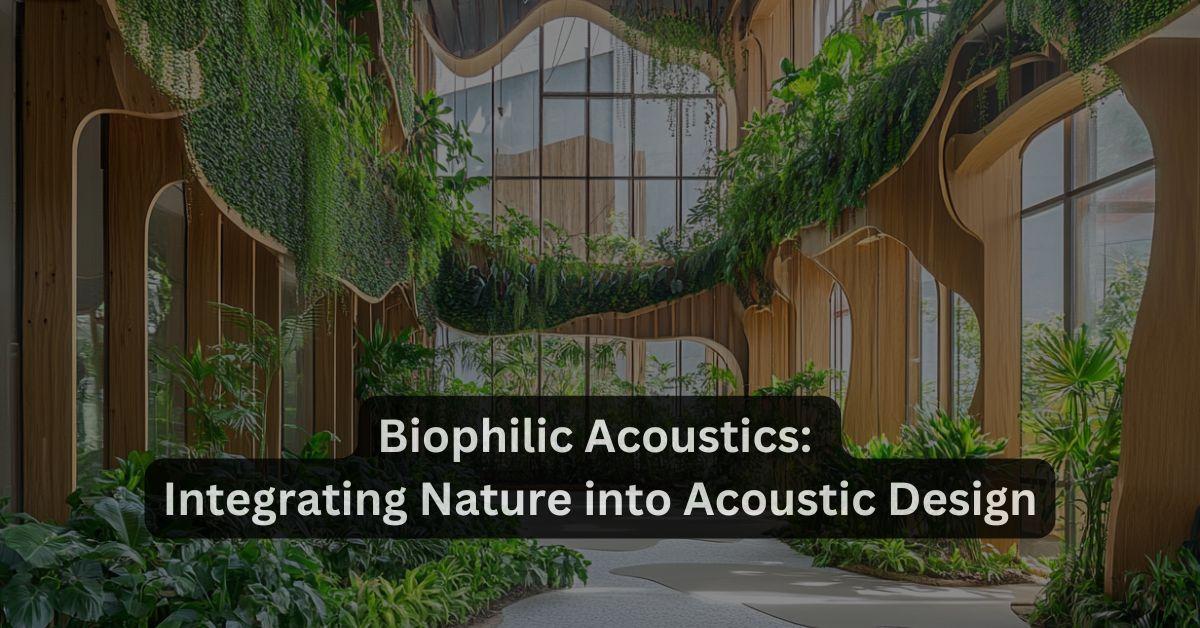
Only sustainable products
Configurable products
Installation available
Free acoustic advice
Biophilic Acoustics: Integrating Nature into Acoustic Design
What is Biophilic Design?
Biophilic design is a concept rooted in the inherent human connection to nature, aiming to recreate the tranquility and restorative qualities of natural environments within interior spaces. This approach extends beyond mere decorative elements, employing organic patterns, textures, colors, and materials to evoke the sensory experiences of nature.
Biophilic design is rapidly becoming a mainstay in modern architecture and interior design. Beyond merely aesthetic appeal, biophilic elements support emotional wellness, reduce stress, and enhance overall productivity.
Studies, such as those highlighted by Terrapin Bright Green, demonstrate that biophilic environments improve human health and cognitive function. They can lower stress levels, elevate mood, and boost productivity by fostering a deeper psychological connection with the natural world.
The emphasis of biophilic design is not only visual but multisensory, including acoustics—recognizing that sound significantly impacts human comfort and mental clarity.
The Intersection of Biophilia and Acoustics
Sound profoundly influences the way occupants experience a space. Poor acoustics can undermine even the most aesthetically pleasing design, negatively impacting concentration, communication, and overall well-being. Effective acoustic treatments are therefore vital for creating truly restorative environments.
Biophilic acoustics seamlessly blends the principles of biophilic design with acoustic performance. The goal is to achieve a harmonious balance—visually, acoustically, and psychologically—using natural or sustainably sourced materials designed to absorb sound and reduce unwanted noise. This intersection delivers holistic environments that support health, comfort, and productivity.

Incorporating biophilic acoustic solutions is especially beneficial in bustling modern spaces, such as open-plan offices, healthcare facilities, schools, and commercial environments, where noise control and occupant comfort are critical.
Materials and Innovations in Biophilic Acoustic Panels
Modern acoustic panels have evolved significantly, embracing both environmental sustainability and design innovation. Here are several key materials and innovations within biophilic acoustics:
Natural Fiber Panels
Natural fibers such as wool, felt, cotton, and hemp offer superb acoustic absorption, thermal insulation, and aesthetic warmth. Wool, in particular, is naturally flame-resistant, moisture-regulating, and biodegradable, making it an environmentally friendly choice.

Companies like BAUX have excelled in producing acoustic wood wool panels made from natural materials, offering customizable shapes, textures, and colors. Similarly, manufacturers such as Bla Station leverage hemp and cotton to create acoustic solutions that align with sustainability goals and offer effective sound absorption.
Wood-Based Panels
Timber and cork are popular in biophilic acoustic designs due to their inherent warmth, texture, and sustainability credentials. Responsibly sourced wood panels, such as those from Naturewall, are visually appealing and acoustically efficient, often enhancing the aesthetic and acoustic comfort simultaneously.
Cork acoustic panels, such as those produced by Muratto, combine acoustic effectiveness with environmental sustainability due to cork’s renewable harvesting methods.
Recycled and Eco-Friendly Materials
Acoustic panels manufactured from recycled materials are another innovative approach within biophilic design. Recycled PET bottles transformed into acoustic felt panels, as seen from Autex Acoustics, offer sustainable solutions with excellent sound-absorbing qualities. These panels reduce environmental impact by repurposing waste and contribute significantly to acoustic comfort.
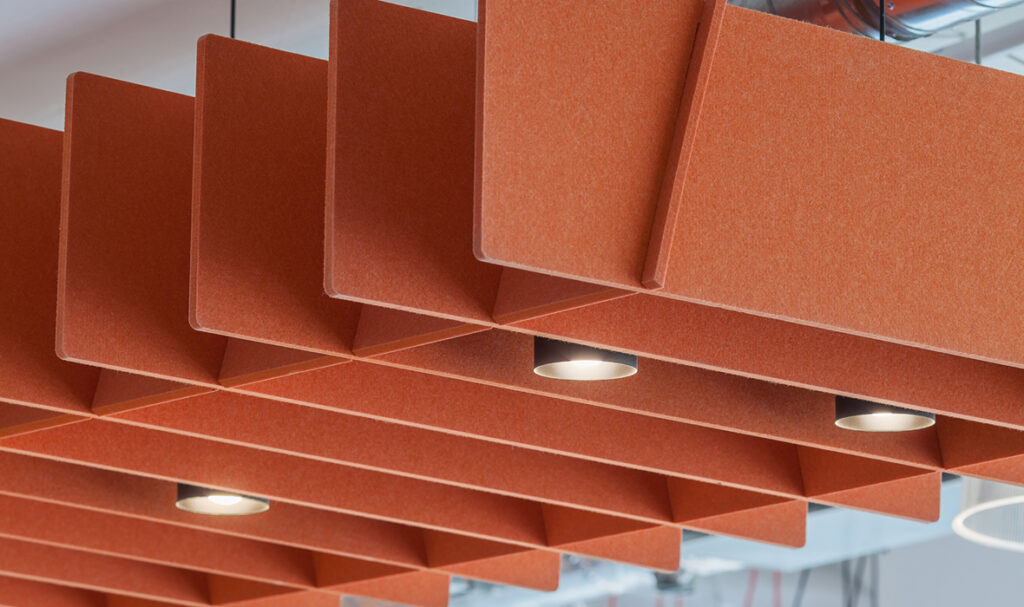
Innovative Biophilic Patterns and Textures
Biophilic acoustic panels often incorporate patterns inspired by nature, such as leaves, waves, and tree bark. Three-dimensional designs mimicking natural textures not only enhance visual appeal but also improve sound diffusion and absorption.
Companies like Abstracta provide decorative acoustic products featuring leaf-like patterns, adding both aesthetic value and acoustic functionality to indoor environments.
Practical Applications and Case Studies
The integration of biophilic acoustic panels has become increasingly prevalent across various environments due to their combined aesthetic and functional benefits. Below are some examples of practical applications and notable case studies:
Offices and Workspaces
Open-plan offices frequently suffer from noise distractions, impacting productivity and well-being. Google's global offices famously incorporate biophilic acoustic solutions, using natural materials and nature-inspired designs to create calm, focused environments. Panels from manufacturers like Ecophon provide a visually appealing and acoustically comfortable workspace, significantly enhancing employee satisfaction and productivity.
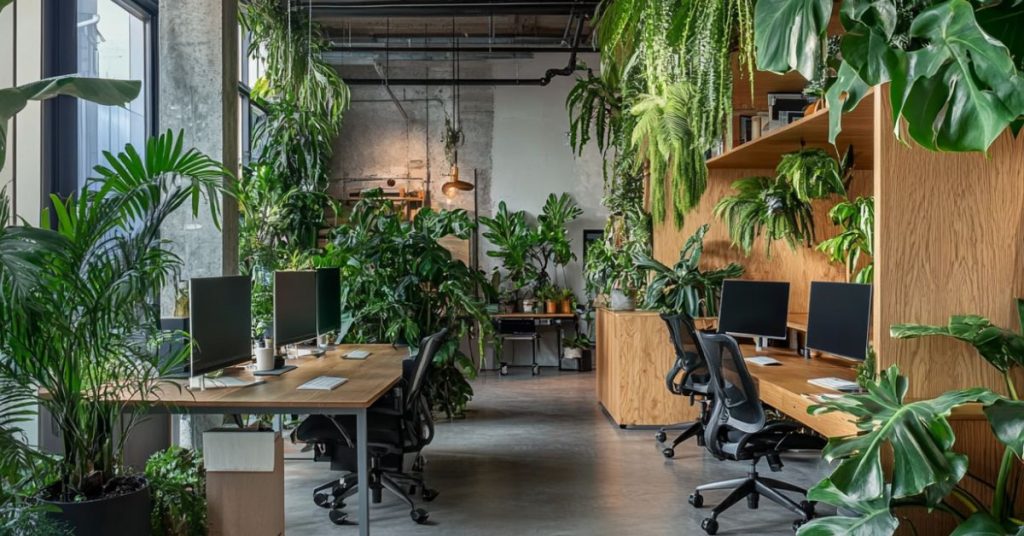
Educational Facilities
In educational settings, poor acoustics can hinder learning and concentration. Schools and universities have increasingly turned to biophilic acoustic solutions. Ecophon’s biophilic acoustic panels, featuring natural textures and patterns, have successfully improved speech intelligibility, reduced distractions, and fostered calmer classroom environments conducive to learning.
Healthcare and Wellness Spaces
Healthcare facilities such as hospitals and wellness centers benefit immensely from biophilic acoustics. Quiet, restful spaces are critical for patient recovery and staff efficiency. Organizations like Quiet Mark advocate biophilic acoustic designs in healthcare settings, emphasizing their impact on reducing stress, enhancing comfort, and ultimately improving patient outcomes.
Hospitality and Retail
Restaurants, hotels, and retail environments also leverage biophilic acoustics to enhance customer experiences. Acoustic comfort contributes to longer stays and improved satisfaction, making establishments more inviting. Brands like Kirei supply panels that merge sound absorption with nature-inspired aesthetics, transforming spaces into relaxing, pleasant environments.

Benefits and Considerations for Incorporating Biophilic Acoustics
Biophilic acoustic solutions bring numerous benefits:
Enhanced Emotional and Cognitive Performance
Nature-inspired acoustic environments can reduce stress levels, promote relaxation, and enhance cognitive clarity. Occupants in biophilic spaces frequently report increased focus, improved mood, and greater overall satisfaction.
Improved Acoustic Comfort
Biophilic acoustic panels significantly reduce reverberation, enhancing speech intelligibility and overall comfort. Effective acoustic management positively impacts occupant productivity and well-being.
Better Indoor Environmental Quality
Integrating sustainable materials improves indoor environmental quality, promoting healthier air and sound conditions. Eco-friendly materials lower the environmental footprint while enhancing the comfort and sustainability of indoor environments.
When implementing biophilic acoustics, consider these key points:
- Sustainability: Opt for products certified as sustainably sourced or made from recycled materials.
- Acoustic Performance: Always review the Noise Reduction Coefficient (NRC) ratings to ensure suitability for your space.
- Maintenance and Durability: Select materials that are easy to maintain and durable to ensure long-term functionality and aesthetic appeal.
Conclusion
Biophilic acoustics represents a harmonious integration of natural aesthetics, acoustic performance, and occupant wellness. By embracing biophilic design principles, architects and interior designers create spaces that resonate deeply with occupants, improving both psychological and physical comfort.
Interested in exploring biophilic acoustic solutions for your environment? Visit Sonio to learn more, or subscribe to our blog for the latest in acoustic innovation and sustainable design.
[related_products is_auto_added="1"]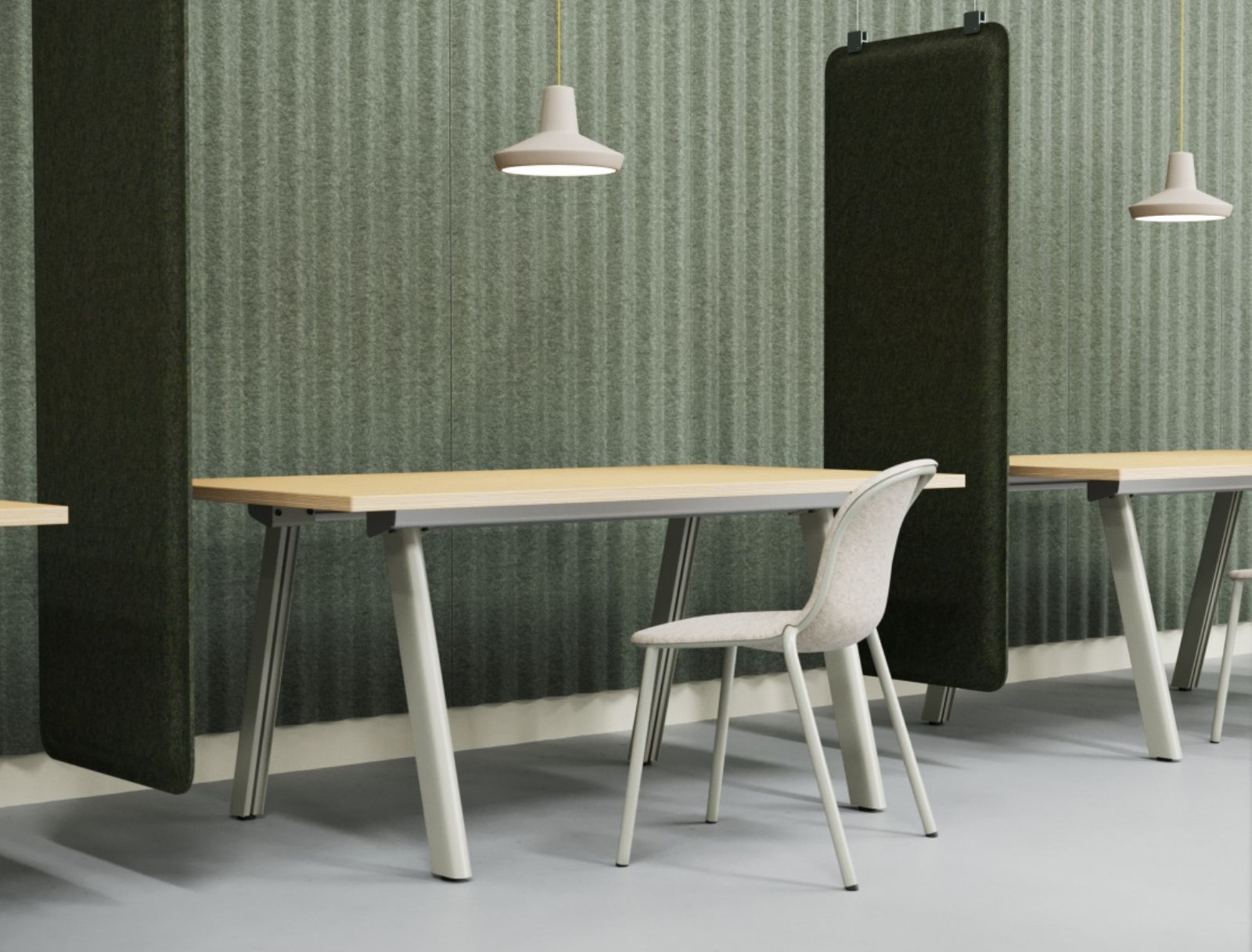 Acoustic Wall Panels
Acoustic Wall Panels 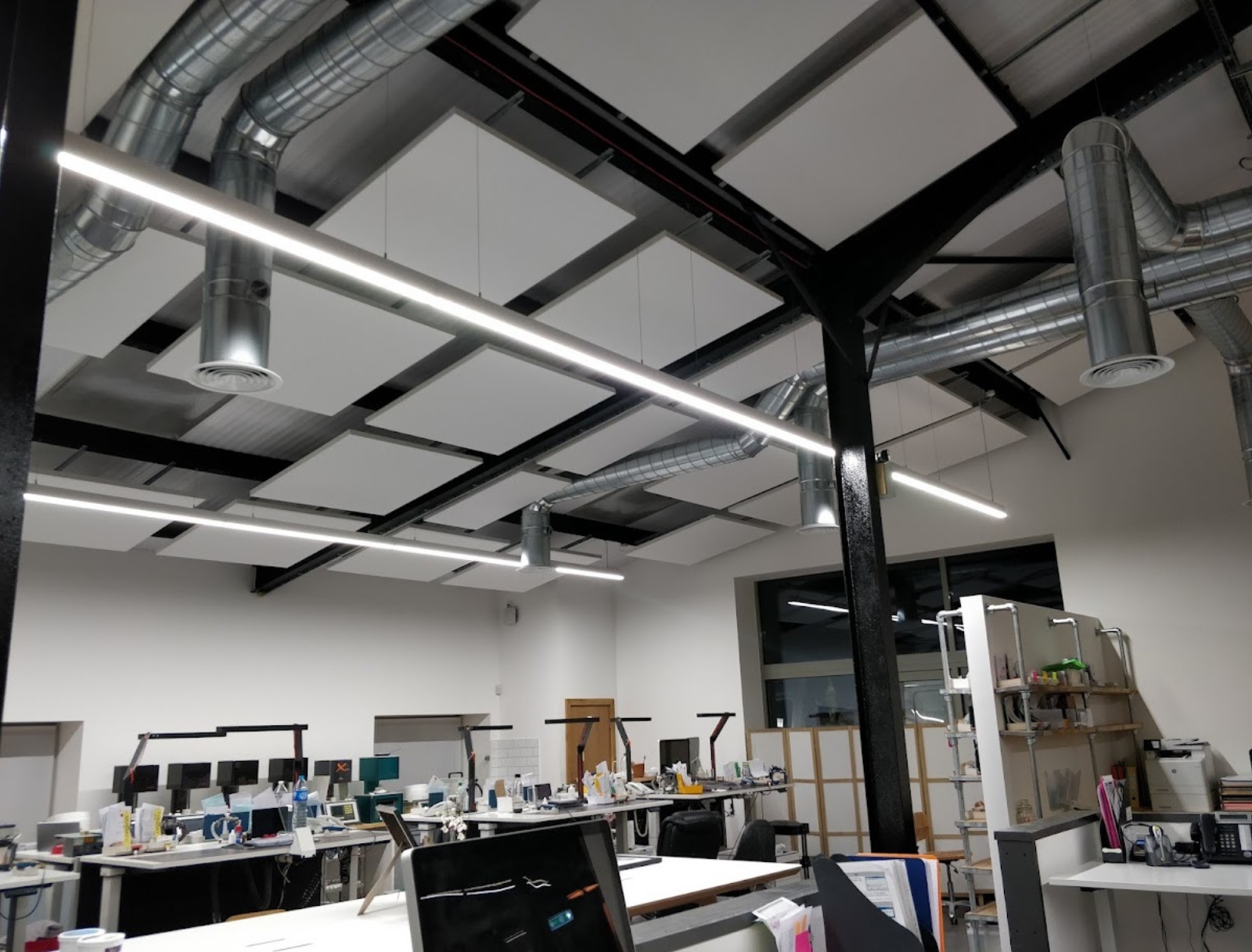 Acoustic Ceiling Panels
Acoustic Ceiling Panels 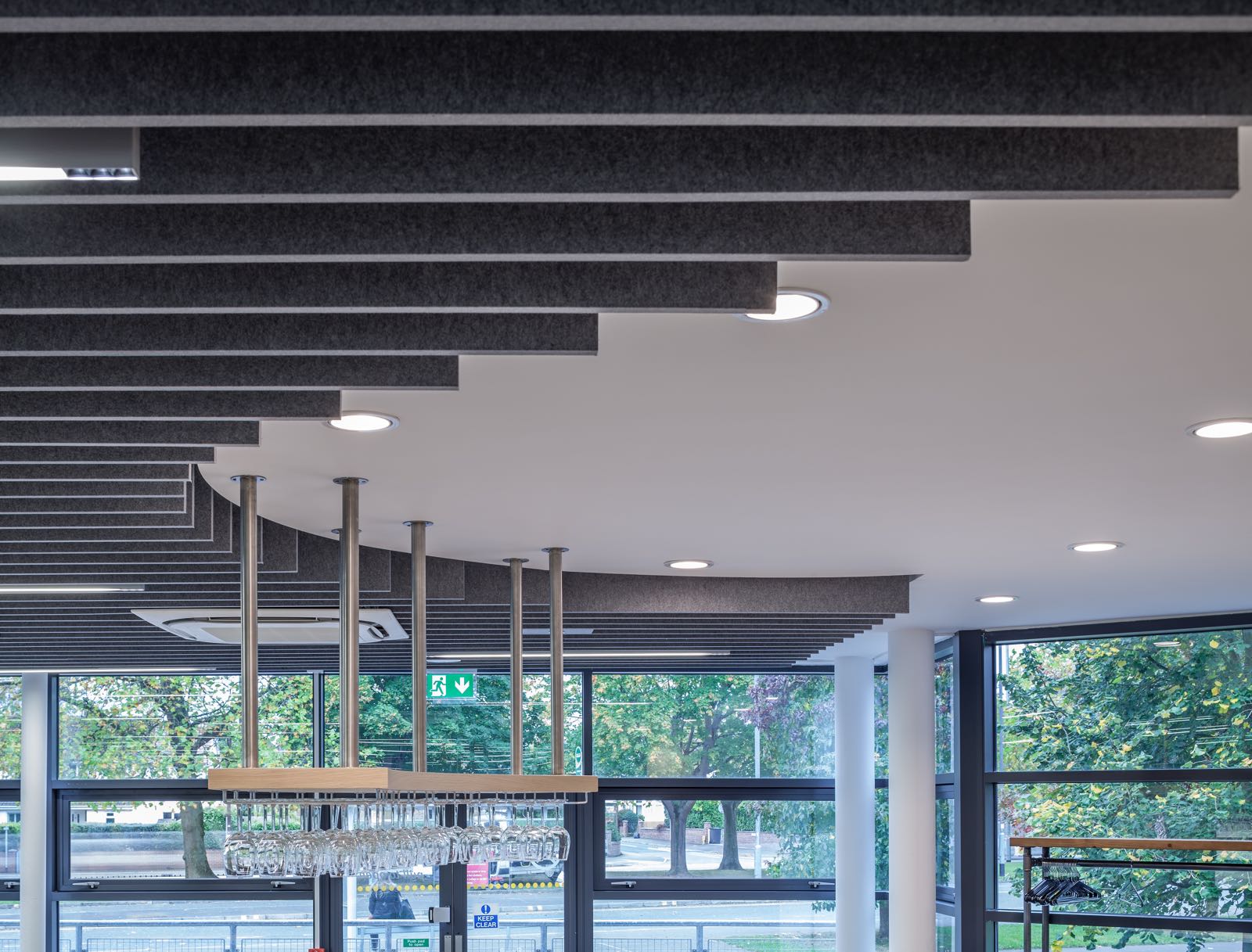 Acoustic Ceiling Baffles
Acoustic Ceiling Baffles 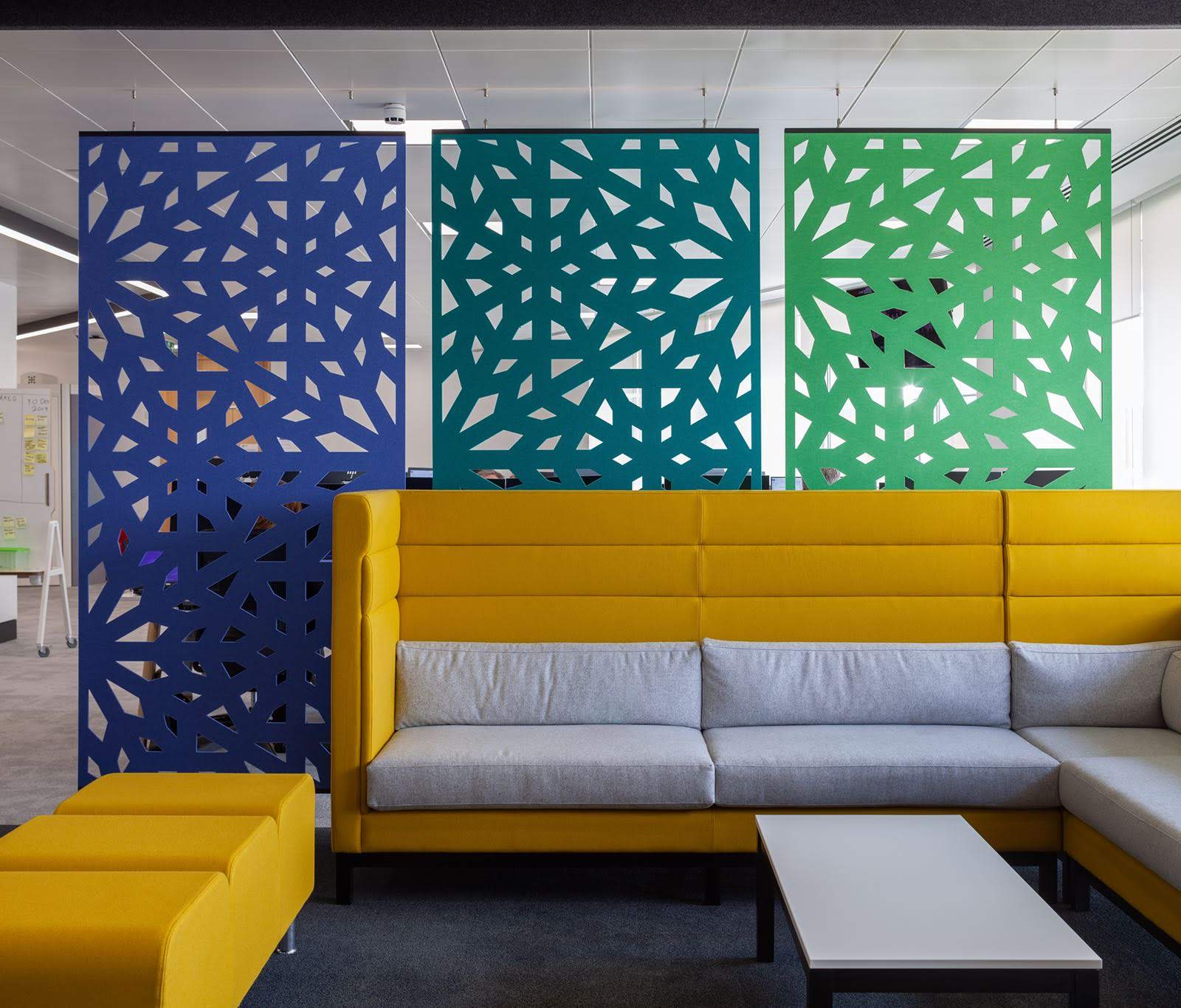 Acoustic Screens
Acoustic Screens 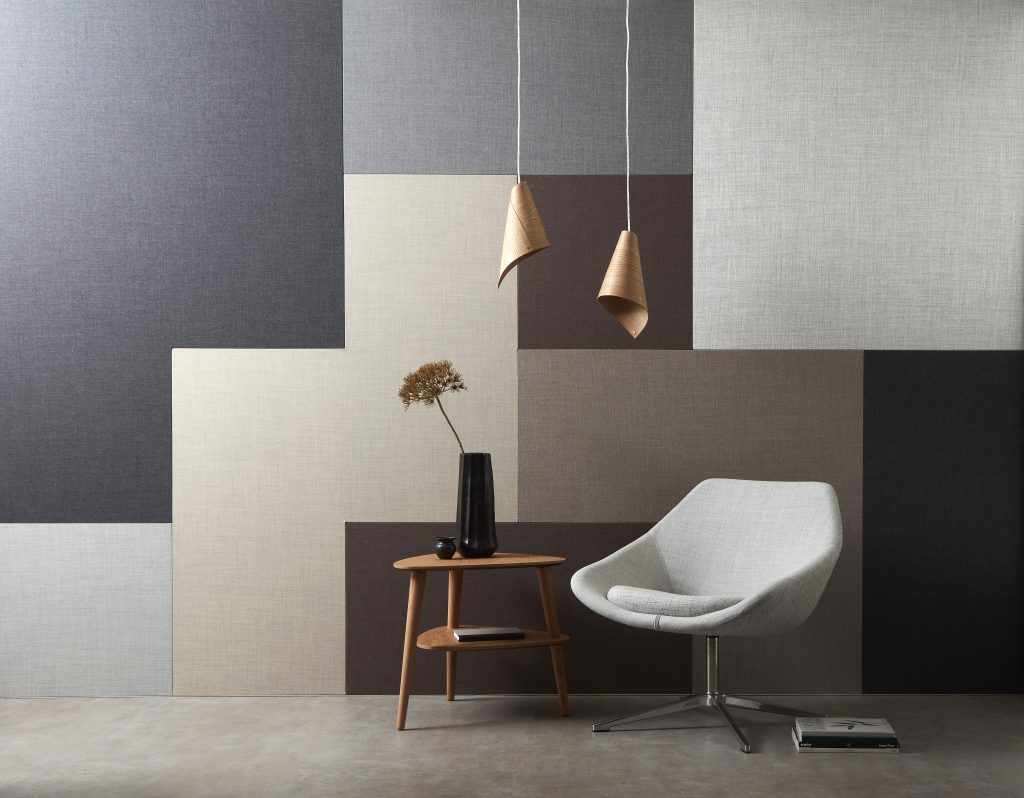 Acoustic Fabric
Acoustic Fabric 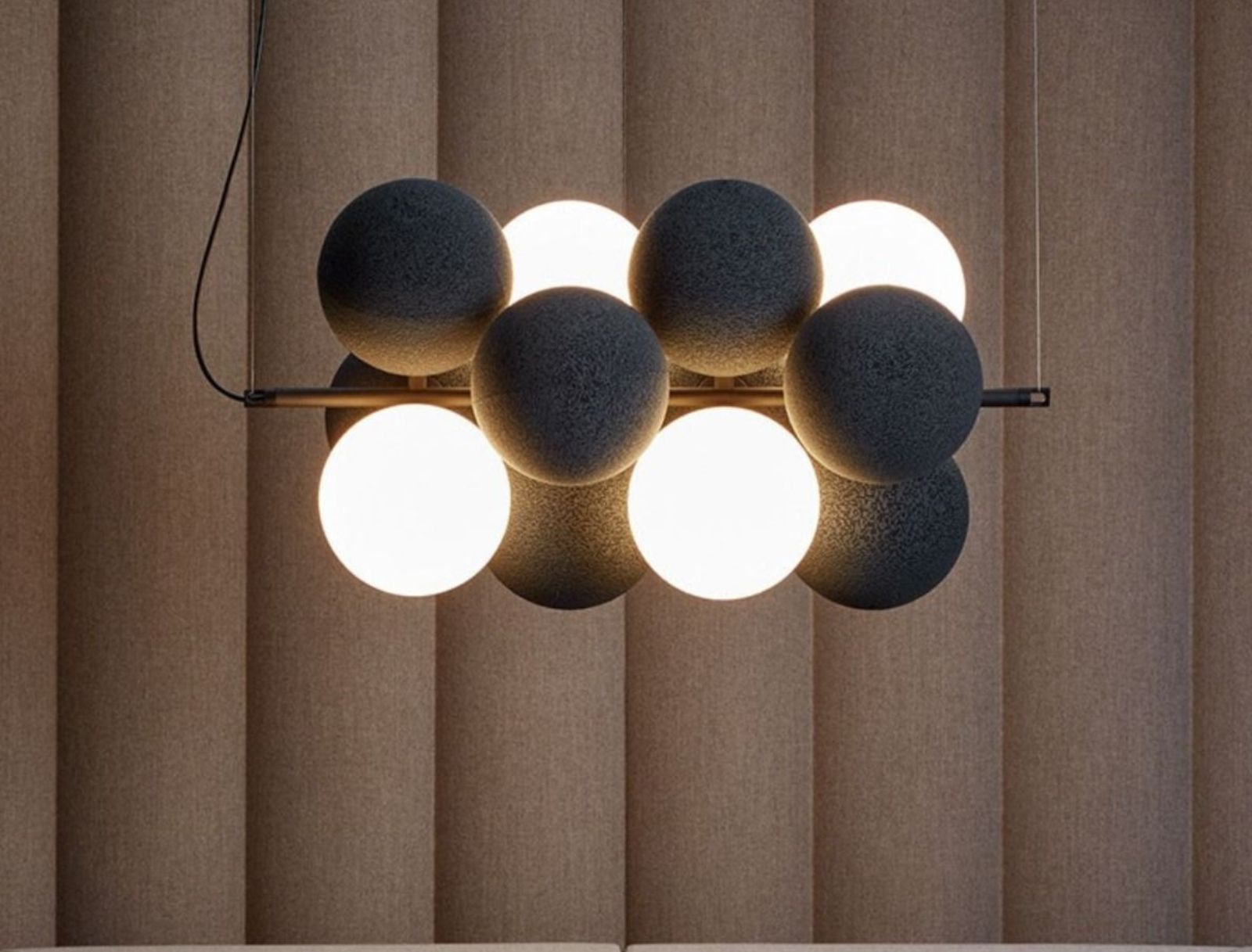 Acoustic Lighting
Acoustic Lighting 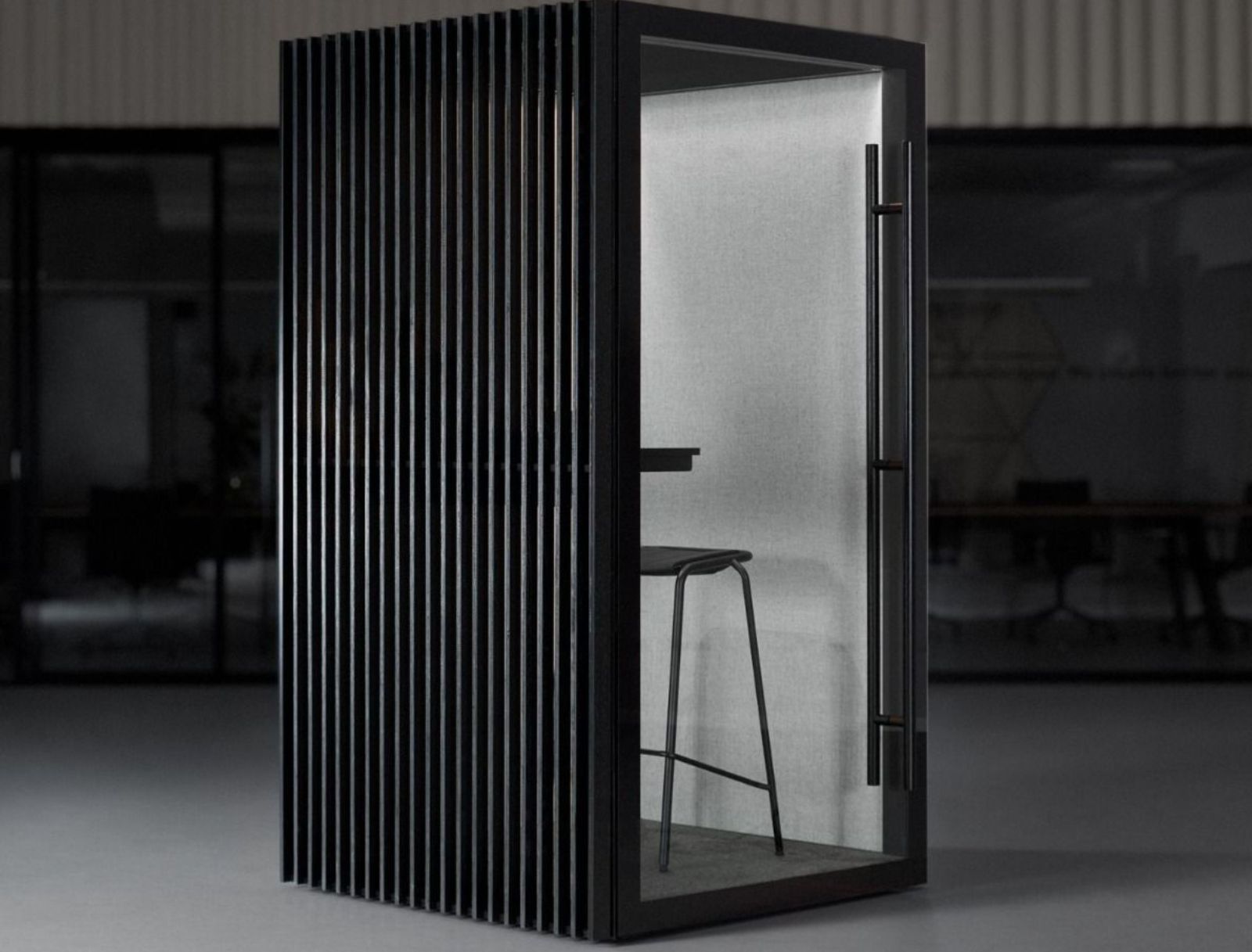 Acoustic Booths and Pods
Acoustic Booths and Pods 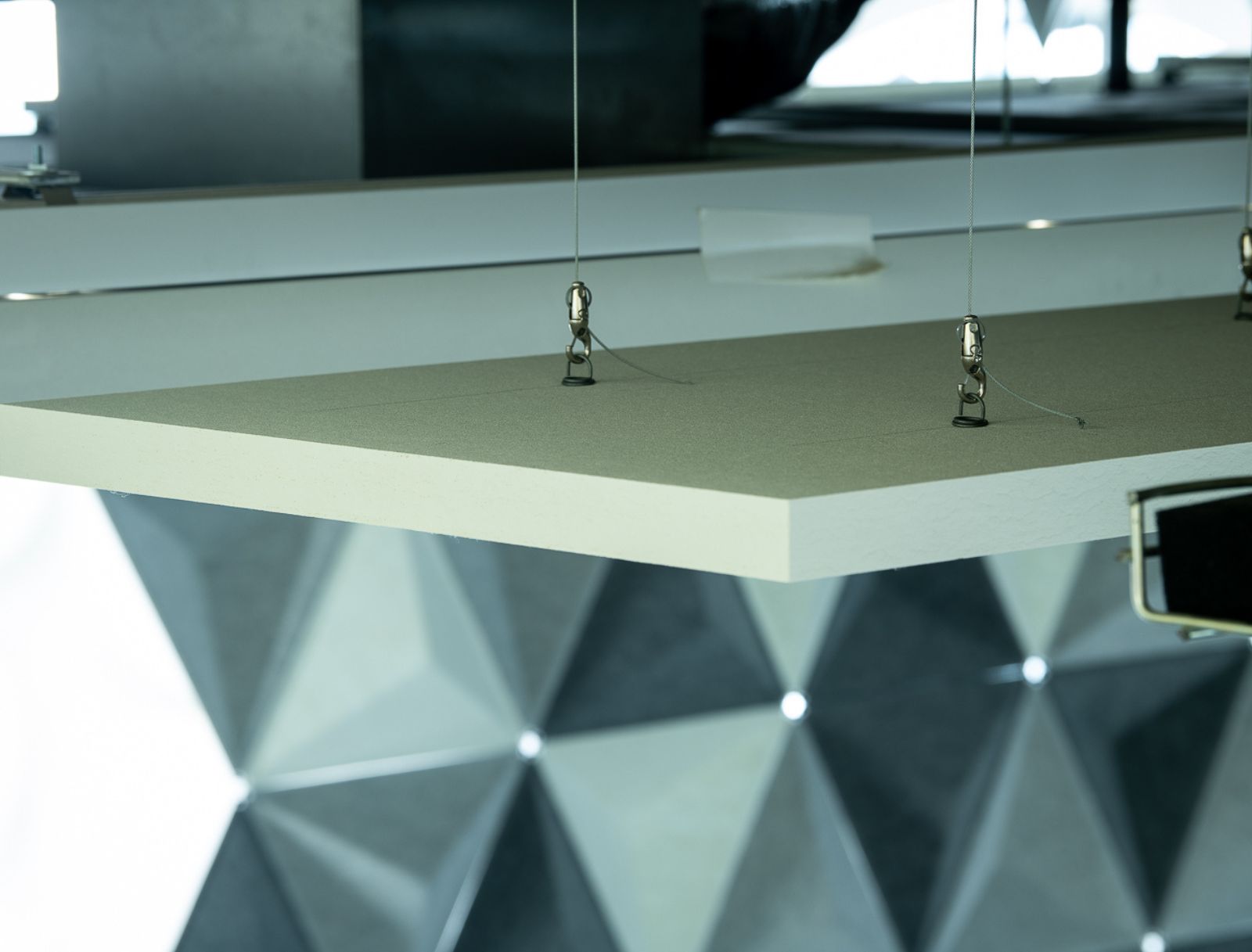 Acoustic Panel Accessories
Acoustic Panel Accessories 